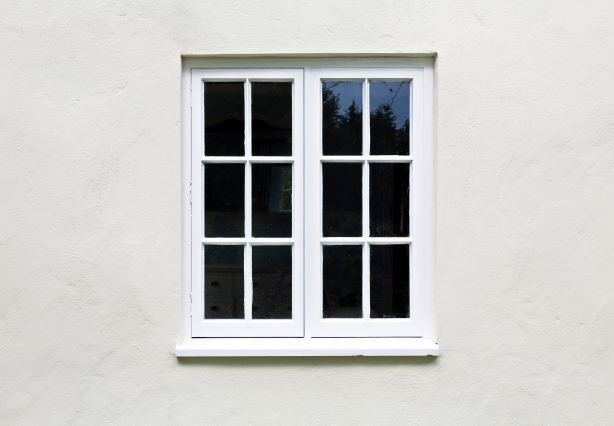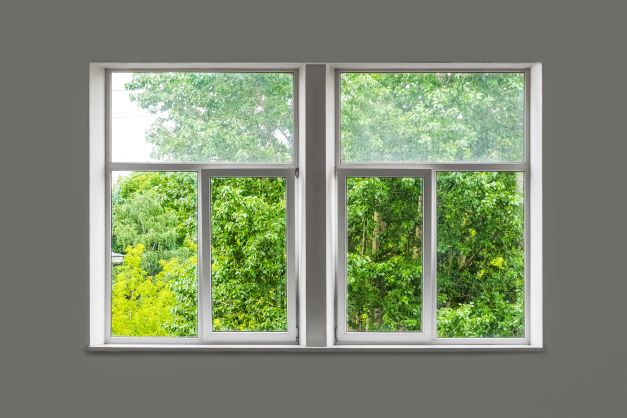A benefit to double-hung sash windows is they have more ventilation options than both single-hung sash windows and casement windows. We are experts in many types of windows and are well-placed to explain the advantages and disadvantages of two popular designs, casement and double-hung sash windows. Choosing between single-hung and double-hung windows comes down to cost, maintenance, and energy efficiency.
Whether you’re looking for the traditional style and thicker frame of wooden sash windows for a listed-building Victorian home or you want casement windows for a new build, all new windows have much-improved energy efficiency compared to older models. On modern properties, you’re more likely to see double-hung sash windows, while old sash windows tend to be single-hung.
Windows with two sashes allow increased ventilation— you can control ventilation by lifting and lowering the upper and lower sashes. It is called a double-hung window because the top and bottom sashes are operable and move up and down. Double-hung windows, as you can tell from the pictures, look similar to single-hung windows. The main difference is the inclusion of two sashes, allowing greater versatility regarding functionality.
Casement windows were first popular in Tudor times and were then popular in the Edwardian era and beyond. Both window types are engineered with energy efficiency in mind, but the frame material brings an additional layer of efficiency.
What Is the Superior Window, Casement or Double-hung Windows?
Casements are usually considered an “entry-level” window type, while double-hung are often seen as “luxury options.” But what exactly do those terms mean? And how do you know which one is better for your home? Here’s everything you need to know about the different types of windows.
What Are Casement Windows and Double-hung Sash Windows?
Casements are windows that open outward, allowing light into the room. They are usually found in older homes. Casements are made of wood, metal, or fibreglass. Some casements use hardware that allows them to swing outwards. Double-hung sash windows open inward, letting air flow into the house. They are typically made of wood, aluminium, or steel. These windows are easy to clean because there is no frame around the glass.
What is the difference between sash windows and casement windows?
Casement windows are often confused with sash windows because both types of windows open horizontally. However, there are some critical differences between the two window styles. Casement windows are generally considered to look better than sash windows. Casement windows allow for more ventilation than sash windows do. And finally, sash windows are traditionally made of wood, while casements are usually made of aluminium or vinyl. Casement windows are also known as double-hung windows.
Casement Windows and Double-hung Sash Windows Explained
Double-hung sashes are the most common type of window used today. These windows open vertically and horizontally. Casement windows are different because they open vertically and horizontally. This makes cleaning debris, such as leaves, snow, or rainwater, easy. Casements are suitable for small spaces, like bathrooms, kitchens, and garages.
Casement vs double hung
Double-hung windows are generally considered to be superior to casements. They are easier to install, cleaner to maintain, and offer greater energy efficiency. However, casements are much simpler to manufacture and less expensive. Casements are also typically found in older homes, while double hung is becoming increasingly popular in newer houses.
Casement Window Designs
Casements are popular among homeowners looking to enjoy fresh air without sacrificing privacy or security. They provide easy outside access while protecting against wind and weather. Many styles come in various sizes, shapes, colours, materials, and finishes. Some casements are designed to look like traditional windows, while others resemble French doors or sliding glass patio doors. Casement windows can even be custom designed to match any décor.
Casement Window Materials
A casement window is one of the most popular because it provides excellent insulation. It is also very energy efficient. There are different types of casement windows, including fixed casement windows, sliding casement windows, tilt & turn casement windows, and French casement windows.
Fixed Casement Windows
The traditional style of casement windows is the fixed casement window. These windows are designed to open outwardly. Fixed casement windows are usually found in older homes.
Sliding Casement Windows
Sliding casement windows are much like traditional ones except for no frame around the glass panes. This allows you to slide the windows up and down. Sliding casement windows are usually used in newer homes.
Tilt & Turn Casement Windows
Tilting casement windows are similar to sliding casement windows except that they do not come entirely off the wall. Instead, they tilt outwards and downwards. Tilt & turn casement windows are usually installed in small rooms with limited space.
How much do casement windows cost?
Casement windows are one of the most popular styles because of their unique look and energy efficiency. They are also known as sash windows because they feature a sliding mechanism that opens and closes the glass panes. There are many different casement windows, including double-hung, single-hung, bay, bow, French doors, sliding patio doors and bi-folding.
The price of installing casement windows varies considerably based on the type you choose, the location of the windows and whether you want to install them yourself or hire a professional installer.
A typical installation costs around £4000. However, it depends on where you live and how big your house is. For example, a standard installation of four windows could cost up to £8000 in London, while a similar job in rural Lincolnshire might cost just £2000.
Typically, larger houses will require more windows than smaller homes. On average, a typical British home will need about ten windows.
If you decide to go DIY, there are several things you need to consider before starting work. You’ll need to source materials such as hinges, locks, weather seals, screws, glazing bars and fixings. If you’re hiring a professional installer, they’ll provide everything you need.
You’ll also need to factor in the cost of removing and disposing of old windows. This is usually included in the total price of the project.
There are grants available to get this done. Read Warma UK’s guide to meet the criteria for insulation grants under the ECO scheme. Learn how to qualify and save on energy-efficient home improvements
What is the difference between a casement window and a double-hung window?
Casements are single-sash windows that open vertically. They often swing outward or inward. Double Hung Windows are made of two separate panes that slide horizontally into each other. This type of window opens both vertically and horizontally. Sliding windows are generally easier to clean than double-hung windows.
Pros and Cons of Casement Windows
Casement windows allow plenty of light without worrying about drafts blowing in during the colder months. They are also easy to install and maintain. But there are some drawbacks to consider.
Casements are designed to open outward rather than inward. Adding screens or storm shutters to keep out cold air makes it difficult. Casements do allow for a lot of natural light, though, especially if you live in a sunny area.
Double Hung Windows
The double-hung window is one of the most popular windows used today. This style offers many advantages, including energy efficiency, durability, and affordability. These windows are also known to provide excellent insulation, allowing you to keep cool during summer months and warm during winter. If you want to learn how to install a double-hung window, read on!
Pros and Cons of Double-hung Sash Windows
Double-hung sash windows are one of the most popular windows used today because of their versatility. These windows come in many different styles and sizes, allowing homeowners to choose the best window type for their homes. However, you need to know about the pros and cons of double-hung sash windows before making a purchase.
The Pros of Double Hung Sashes
Versatility
Double-hung sashes offer several advantages over single-glazed windows. For example, they allow homeowners to control the ventilation while providing ample room light. Because of this, they are great options for homes located in areas where it gets boiling during the summer months. Additionally, double-hung windows are ideal for older homes since they do not require much maintenance.
Energy Efficient
One of the most significant benefits of double-hung windows is their energy efficiency. Unlike single-glazed windows, double-hung windows can open up entirely without sliding along tracks. This allows air to flow freely throughout the house, keeping it cool in the summer and warm in the winter.
3. Easy Installation
Are Casement or Double-hung Windows Better for my home?
Casements are suitable for small spaces where the window needs a lot of room to open outward. They are often used in kitchens because they allow access to the outside while still keeping heat inside. Double-hung windows are great if you plan to add screens or storm doors. These windows require less installation effort and are easier to install.
A double-hung window will cost a little more than a casement. However, it offers better insulation and energy efficiency. This type of window is best suited for homes built before 1980. If you live in a newer home, consider installing a single-hung window.

